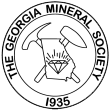"Organize and catalog your collection"
by
Dave Babulski, Ed.D.
("Tips and Trips", Vol. XXXIII/10, October 2004, page 10.)

Hello everyone. This month we will discuss some of the various ways that you can organize and catalog your collection. It is sad to see a collection of beautiful mineral micromounts with no organization to the collection. When I first started out as a micromounter one of my mentors was a retired gentleman who had a fantastic collection of world class micromounts. But he had no formal catalog of his collection. He did have a label for each mount which helped a bit. However when you consider that his collection had over 10,000 micromounts you can imagine the problem in trying to find a specific specimen. My point in relating this story is to stress that a specimen label does not a catalog make. Like mounting techniques I suspect that there are as many ways to catalog a collection as there are micromounters. Over the years I have tried a number of ways of cataloging my own collection and to this day that effort continues to evolve as my collecting interests change. In its basic form a catalog for your micromount collection consists of two basic parts: (1) The label on the micromount itself, and (2) an external list of the specimens in your collection. Let’s look at each of these elements individually:
The Label:
At a minimum the data you place on the micromount label should be the mineral name (spelled correctly, of course), location where the specimen was found, and a catalog number. Some micromounters also record the chemical formula along with the mineral name and locality information. Since I hand letter my labels, that is a bit much for me to put on my own micromount labels. Now I choose to go against convention and I mount in the lid of the micromount box. I use plastic micromount boxes with lack lids. So when I mount the "lid" now becomes the "base". I mount this way because I use a home-brew gimbal stage with my microscope and this way just works better for me. I place a self adhesive with dot in the upper right corner of the clear lid of the box. In that white dot I carefully write the specimen number. I choose to use a consecutive numbering system. Some collectors use a Dana system and some use a combination of letters and numbers. The point here is to provide a way to quickly locate the specimen when it is stored in whatever drawer arrangement you use. Then using a larger rectangular label I write the mineral name and locality information in ink on the label. This prepared label is attached to the top of the micromount box. On the bottom of the box, I use a smaller rectangular self adhesive label and enter the specimen number on this label. That way if the lid and the base become separated I can always match them up. If the specimen is of special note, I sometimes place a colored adhesive dot in the upper left-hand corner of the box lid. (The same colored dot is placed in the catalog as well) As a final step, I coat all the labels with a thin coat of Modge Podge. This is a decoupage fluid that you can buy at craft stores. What this coating does is prevents the adhesive from out-gassing becoming brittle and falling off over time. Now, we are not done yet!
The Catalog:
Currently I use sheets of college ruled notebook paper organized in a three-ring binder as my external catalog. The specimen number is entered on the left side of the page and then the mineral name and detailed locality information is entered on the same line following the number. I used to enter the chemical formula but this got to be too time consuming. If I need the mineral chemistry, I'll look it up! I try and enter as much precise locality detail as I can. For me this adds to the enjoyment of the specimen. The internet is invaluable here. If you have not already seen it there is a site at http://www.mindat.org that has excellent locality detail for quite a few mineral species and localities. Often if you enter the name of the mine, a wealth of precise locality data comes up. I have a second external catalog that lists the specimen number and the chemical class of the specimen. For example I have a separate section for silicates, sulfides, arsenates, etc. Yea I know it all sounds like a lot of work, but it is fun (well it is for me anyway!) and adds immeasurably to the enjoyment of a mineral collection. What ever technique you use to organize your collection, I encourage you catalog your specimens, after all a specimen without a label and a catalog entry is just "a pretty rock". Until next time, may all your skies be blue and all your vugs be crystal-filled.

Copyright © Georgia Mineral Society, Inc.
